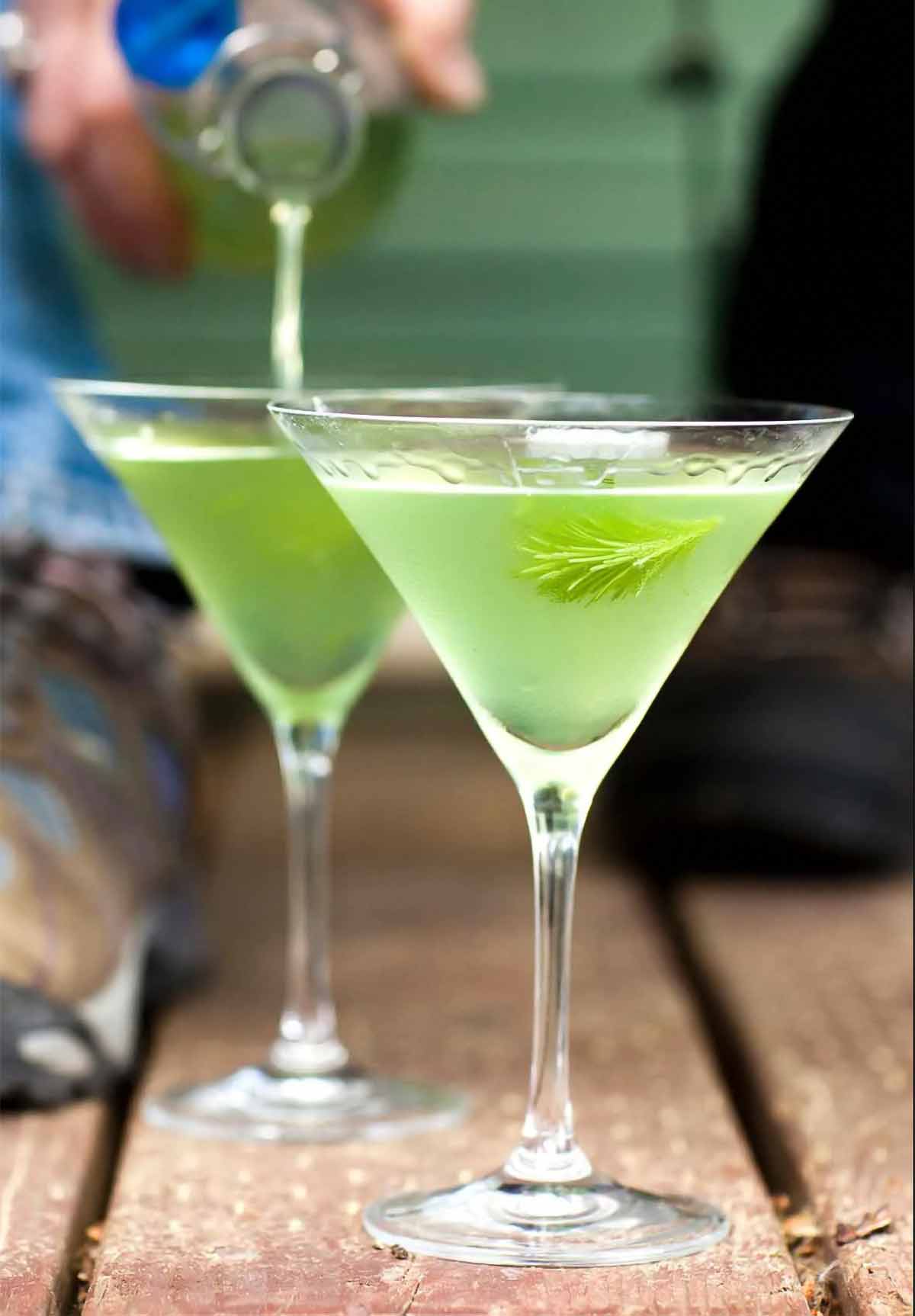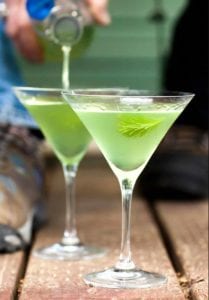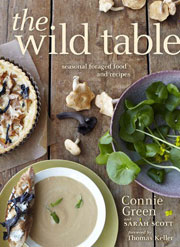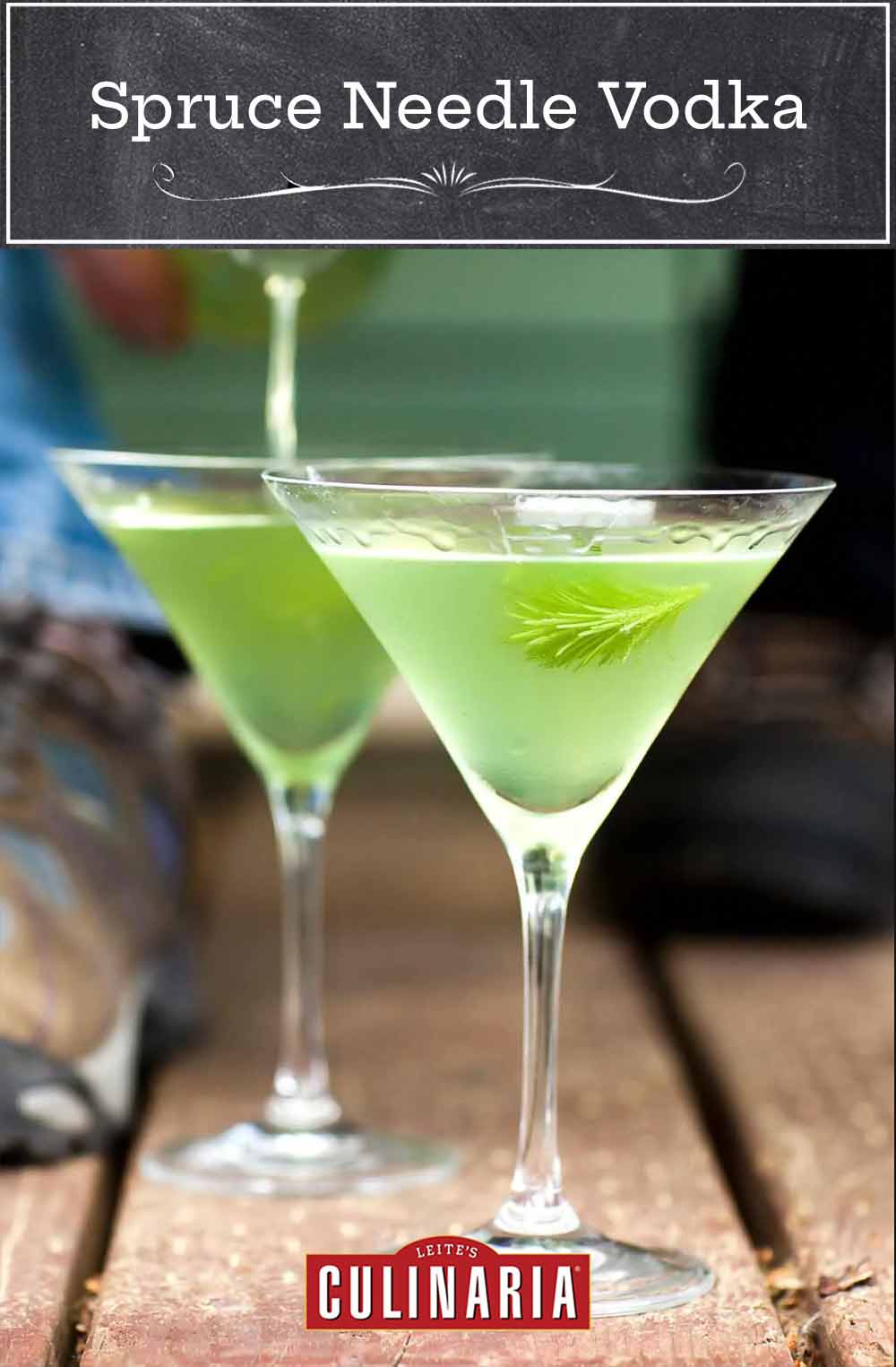
This spruce needle vodka is essentially just vodka infused with Christmas tree. The piney potable draws rave reviews from folks who’ve tried it and will make you want to hum along to “O Tannenbaum” as you knock some back. Simply pour the piney potable into a chilled martini glass and float a fresh, tender tip of your Christmas tree branch atop or bottle it up and gift it to the person who has everything.–Connie Green and Sarah Scott
What’s the difference between spruce, fir, and pine?
While we’re on the topic of tannenbaums, the type of tree you pluck a sprig from will make a profound difference in the final spirit. So as not to go overboard with a resinous smack, stick with spruce or Douglas fir, preferably one from a local tree, rather than pine. And ask whether the tree was sprayed–you want one that wasn’t. Oh, and just to state the obvious, opt for a vodka you wouldn’t mind sipping straight up.

Spruce Needle Vodka
Ingredients
- 1 cup spruce or Douglas fir needles, stripped from the branches
- One (26-ounce) bottle vodka
- Tender tips of the branches, for garnish (optional, but so very festive)
Instructions
- Place the spruce or fir needles and 1/3 of the vodka in a blender. Blend at high speed for 2 minutes. Pour into a large, clean jar or bowl.
- Pour the remaining vodka into the blender jar and swirl it around to gather any green residue on the sides and bottom. Pour this into the needle-infused vodka and stir to combine. Cover the jar or pour the vodka back into its original bottle and seal. Refrigerate for 1 week.
- Strain the vodka mixture, discarding the solid pine mass. Strain the vodka again through a coffee filter or cheesecloth and then pour the vodka into a clean bottle. You can stash the emerald green elixir indefinitely in the freezer. (May be sorta nice to pull it out for a little Christmas in July, eh?)

Explore More with AI
Nutrition
Nutrition information is automatically calculated, so should only be used as an approximation.
Recipe Testers’ Reviews
Aside from the fact that this vodka is the easiest thing to make (it only took 10 minutes), the taste and smell are wonderful. I love vodka, and this spruce needle vodka was a huge hit at our house. I’ll make sure to always have this on hand.
This spruce needle vodka is wonderful—like the best of both vodka and gin! It’s easy and fun. I’m gifting bottles of this for Christmas!
We love infused spirits, so this spruce needle vodka recipe really intrigued me. I thought it would wind up either amazing or a total bust. Happily, it was really, really great. Aside from the fact that you may not be able to get fir needles yearround, it’s a super easy recipe. A week of steeping in the freezer with bits of our Christmas tree and the vodka was sharp, bracing, and redolent of the great outdoors.
I didn’t make a full batch because I was a little nervous about the outcome, but everyone who tried it was clamoring for more. It made a mean martini, and even mixed well with tonic and lime juice. I may make a few bottles before our tree is gone and keep them in the freezer to have all winter.












This vodka infusion really spoke to me, but sadly having tried it twice with disastrous results both times, I can only assume that I messed up somewhere along the line despite following the recipe meticulously and despite having infused many spirits with fruit, herbs, and spices.
The first time my batch turned out badly, I attributed it to having used the wrong type of Christmas tree branches, so this year, i ordered fresh Douglas Fir branches from an Oregon farm. My infusion, which rested in the fridge for a week, and was strained, still looked like muddy green pond water, nothing like the stunning, bright, clear green color of the vokda pictured in the photo, and the taste was nothing short of bracingly harsh and medicinal.
I doubt i will give it a third try, given the waste in time and money on my two botched efforts.
Mindy, I’m so sorry. Since there are only two ingredients, the issue might lie with the fir needles. Tender fir needles starts with a bright burst of tangy citrusy tang followed by the more familiar pine-y flavor. I’m really sorry…
I have a question. I’m in the process of straining mine. I used Fir tree needles on the day we got our tree. I pulled off the needles (similar to pulling off rosemary needles), followed the recipe, and refrigerated the mixture. Now today, one week later, I’m straining…my mixture is an army/pond scum green, not an emerald green. I might pass it through a cheesecloth a few more times because it looks less than appetizing. What went wrong? Thanks!
On the upswing, my kitchen smells like a fresh cut tree!
Julia, it sounds like you did everything perfectly. I suspect it has more to do with the variety of tree than any error on your part. Spruce and fir tree needles can vary in color anywhere from a blue-ish green to a dark green, and this would impact the final color of your vodka. I think your suggestion to strain it a couple more times may help with the issue. And if you have coffee filter available, try using that instead of the cheesecloth.
Thanks for the advice and the vote of confidence! I agree, I think it was the type of needles used. I was very discouraged when I saw the mixture, and yes, I ended up straining the mixture through coffee filters (multiple times!), but it never improved the color/appearance. My last straw came by when my 21 year old daughter came by, took one look at it, and said, “there is NO WAY I’m trying whatever THAT is!”? So, long story short, it went down the drain after I tried a taste of it. I will try it again with the knowledge/suggestion of tasting the needles first. I refuse to give up!
I’m sorry to hear that it didn’t improve in color, Julia, or that it didn’t go over well. I think if you can get a more blue colored spruce needle you might get that more emerald color. Do keep us posted!
Wow! It sounds so tasty and refreshing! I’d really love to taste it asap! Maybe I’m going to try it this evening.
Thanks a lot for the inspiration and, as usual, for the clear and well written article! ^_^
Cheers xxx
You are so very welcome, matriomonio Varese! Thanks for your kind words and your enthusiasm! Looking forward to hearing what you think…!